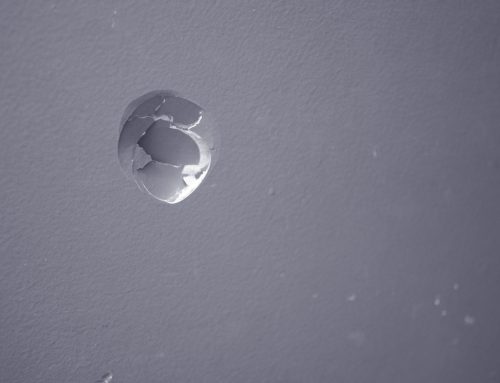I have talked before on the blog how the “AP trend” seems to be instilled in the idea that “attachment parenting” is a list of things that you do.
Breastfeeding, co-sleeping, babywearing etc… all things that are on the “Sears List”… all things that are important in a infant and baby’s life…
But the lists that so many people seem to rely on really seem to focus on “Attached” in the almost the physical sense, providing a happy baby and not the emotional.
When you look at it in that light then “Attachment Parenting” and “Gentle Discipline” seem to work pretty well and easy with a baby and even with a young toddler… but when toddler hits that independent stage, babe starts sleeping through the night more, nursing less and wants to walk more than be carried… the physical attachment is harder to maintain and honestly it is normal!
The importance of being attached is not physical, but is emotional and is simply facilitated by the physical in the beginning especially because a baby’s needs are quite physical also.
So what happens later then?
It seems that so many people seem to think that AP just doesn’t work anymore after a certain age… there are no more lists… no more concrete methods or “how-to’s” and that is when the problems set in and then the ideas that work against attachment make their way into the relationship…
The problem that I see is that what seems to be missing is the “why” of wanting to be attached to our children.
I wrote this a while back on the blog when I talked about Attachment and the problem with Time-outs…
Attachment is important in any relationship and not only is it important but is required for a relationship to work well for everyone.
What does Attachment do?
• It arranges a hierarchy
• It renders the other person endearing
• Brings us home
• Creates a compass point
• Activates proximity
• Evokes a desire to be goodSo the Attachment actually fixes things in a way that the child who is well attached is inclined to want to please us, do things for us, be with us, loves us, follow us, be good for us etc… They fall into being that “easy child” (most of the time)
Neufeld talks about 6 ways that we attach. These should be all done by the age of six within a good attachment, though it is never too late.
You can see the correlation with ages…. From infant, toddler, pre-schooler etc…
These stages are
• Senses (all of the physical ways that promote attachment)
• Sameness (wanting to do what the other is doing)
• Belonging and Loyalty (The “mine, mine” stage)
• Significance (feeling that we matter)
• Feeling (giving your heart away, falling in love)
• Being Known (wanting the other to KNOW you, telling all, sharing all)A child then that is truly attached will do whatever they can to please the parent, will be good because they want to be good, they want to be with the parent, they love them, they want to share their secrets….
When you have their hearts, you have access to their minds, they are open to learn.
We learn from those whom are attached to. The teacher that we loved, that made the most impact on us, the one that we learned the most from is the teacher that has won our hearts. We need to be attached in order to teach, we need to be attached in order to learn.
However, this attachment also makes a child emotionally dependant and they are very vulnerable.
This can be seen as negative, but is important as they are not yet ready to be on their own emotionally until they step away by themselves (and not towards a peer, but really on their own two feet)
Attachment therefore, is not only important in the early years, it is important all the time.
So why attachment is so important in children’s lives and how it works is to guide them into adulthood is what the focus should be on.
And not only does Attachment parenting work after the “Dr. Sears” list of ways to be “attached” dwindle but it becomes even more important. Maintaining emotional attachment is hard though… way harder as kids grow and I do understand that at a certain age things change… but giving up on attachment is not the answer and will lead to more problems in the end…




good post!
ONe thing I am currently working on with Kya, who is in the I want to do it all on my own stage, from getting in her car seat to shopping at the store, is reigning her in to pay attention.
Mostly to pay attention to me, I try to lead her gently and will pick her up and talk softly with her, but sometimes I feel at a loss on how to focus her.
Loved this post Paxye. So true and something Kris and I have discussed in the past. Funny enough, when I first heard of AP I didn’t even know there was a list or a book. I had discussed it with Kris’ sister in terms of their little (foster) brother who has FAS and was at very high risk for attachment disorders. Their mom had coslept, etc. with him but also attempted to maintain emotional connection with him as he grew older, and his social worker (or whoever does their home studies) is always astonished by the lack of attachment problems he has.
Love it, obviously! 😉
Great post! Neufeld’s book was very helpful to me with regard to attachment beyond babyhood (Also, Meredith Small’s book, “Kids.”)
I can’t stand time-outs, yet so many people do them. I wrote an article about time-ins on Suite101. (http://peaceful-parenting.suite101.com/article.cfm/timein_versus_timeout)
Paxye! What a fantastic post! I am mostly dealing with how important non-attachment is, in my Buddhist studies :0) So it’s great to see how attachment, at the right age, creates a good foundation for stability as an adult and therefore less of a negative need to be attached to things.
I have something for you on my blog Paxye!! Yippeee!!
hen
x